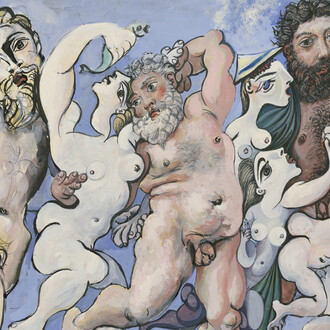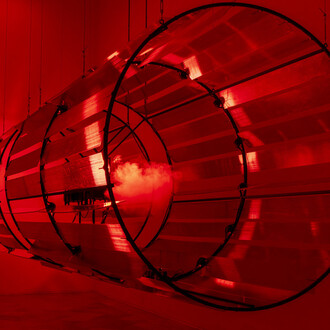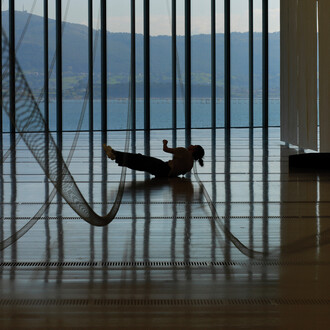In the least obvious corners, complicit gazes find what they long for. Where matter stirs and overflows, the somatic city becomes a living body: its porous skin absorbs and returns the echo of those who have passed through it. Its dermis cracks, oozes and rises. It keeps unbendable memories of rage and dissident desire, it welcomes bodies that overflow and crack the rigidity of its architectures.
Where paint drips, cement cracks, corners corrode and cobblestones shift, Catarina Botelho finds the desired interlocution. She approaches the city, listening to its hidden murmurs and subterranean reverberations. Her camera vibrates on the margins and captures what was not meant to be an image. Her photography is touch and listening: matter becomes a vibrant archive. In this way, the city responds to the dissident question of a past that, as uncomfortable existences, as insolent and linguistic lesbians, has been taken away from us. A gaze that returns to us eroded possibilities, capable of fracturing surfaces and reconfiguring history.
If the city is a stark frontier, it is also a refuge: at times clandestine and untamed, at others visible and joyful. Materia Vibrante invites us to allow ourselves to be traversed by the reverberations of all those dissident bodies historically excluded from the narrative and which, from emptiness, silence and illegibility, have persisted in overflowing the frameworks of recognition and continuing to construct themselves from excess.
Each of the portraits proposes an intimate encounter and embodies a political and vital response. Not only have they inhabited the urban interstices, but their existence has transformed spaces and their uses. They are direct interlocutors of those conversations that many of us lesbians formulate in solitude: a present genealogy that confirms the possibility of a livable life, that which we have so often only fabricated from the archive. They are counter-image and inheritance, uncomfortable and dissonant lesbian bodies that lived their youth under Franco's dictatorship and resisted assimilation, even when there were no words to name themselves or images to recognise themselves in. They always asserted themselves as a fissure in the established order.
Botelho's photography is a dialogue between matter and memory, between the visible bodies of dissident lesbians and the veiled traces that their lives have left behind.
She offers us the rough mirror of these existences, the place where absence leaves its mark, where desire seeps beneath the asphalt and where the archive becomes mineral. Her photographic practice summons the agency of matter, the vibrant echo of the past and the embodied possibility of a future that many of us grew up believing unattainable.
We find ourselves, then, in excess. In the residue, in what escapes, in what does not fit but insists, in what overflows. In what cannot be contained, hidden or neutralised. In that constant tremor, sometimes imperceptible and often destabilising.
In the cracks of the city and in the cracks of the story. In what trembles and shakes us, even if we cannot see it. Where matter loses its intended form and bodies lose their obligation to conceal themselves. We find ourselves in that unexpected alliance between what persists and what resists. Between what is no longer there, but leaves a trace, and what continues to be named, celebratorily, every day. We find ourselves overflowing the frames of the visible, of time and spaces, weaving genealogies between ghosts and monsters.
(Text by Paula G. Robleño)













![Saul Steinberg, The museum [El museo] (detalle), 1972. Cortesía del Museo de Arte Abstracto Español](http://media.meer.com/attachments/dfbad16c22c5940b5ce7463468ac8879f3b4bf23/store/fill/330/330/042ecf3bcd2c9b4db7ddbc57cb32e950c095835f7b5cd55b6e1576a6e78c/Saul-Steinberg-The-museum-El-museo-detalle-1972-Cortesia-del-Museo-de-Arte-Abstracto-Espanol.jpg)


